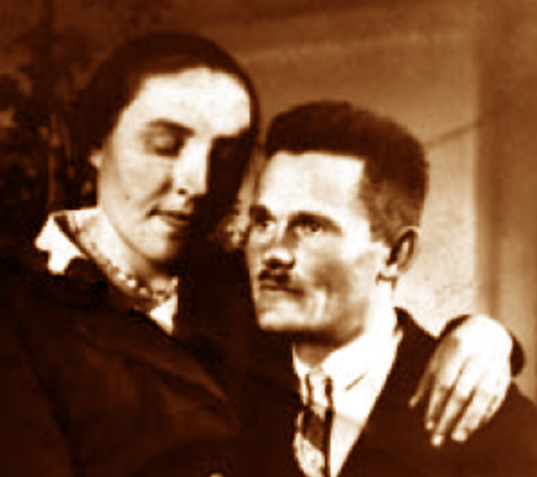Art and Culture
New museum honours Poles killed for helping Jews in Holocaust

Józef and Wiktoria Ulma, Polish World War II heroes named Righteous among the Nations by Yad Vashem.
(Wikipedia photo)
MARKOWA, Poland—Jews and Catholics offered prayers Thursday at the graves of Jews hunted by the Nazis and a Polish family killed for trying to save them, a solemn prelude to the opening of a museum honouring Poles who died for offering refuge.
Polish President Andrzej Duda was to lead the formal opening of the Ulma Family Museum of Poles Saving Jews, in the village of Markowa.
It stands near the place in southern Poland where in 1944 German soldiers killed Jozef Ulma, his pregnant wife Wiktoria and their six children, aged between almost 2 and 8, as well as eight members of the Goldman, Gruenfeld and Didner families that the Ulmas were sheltering.
The museum is Poland’s first memorial devoted to the Christians who helped Jews during the war, an act punishable by the immediate execution of helpers and their entire families.
A photograph that Ulma took of his Jewish neighbours that was stained with the Jewish victims’ blood during the 1944 killings is among the items on display. Also shown are doors with bullet marks from the 1943 execution of the Baranek family, which was sheltering four Jews in the southern village of Siedliska.
The day’s observances began with Jewish and Catholic prayers at the wooded cemetery near the village of Jagiella, where the slain members of the Goldman, Gruenfeld and Didner families are buried. Local, state and Catholic Church authorities as well as schoolchildren heard Poland’s chief rabbi, Michael Schudrich, say Hebrew prayers for the dead.
Three children and two granddaughters of Abraham Segal, 86, who survived the Holocaust thanks to Polish farmers in the area who hid him, came from Israel for the ceremonies.
“We are very excited by these ceremonies,” Segal’s daughter, Pninit Naveh, told The Associated Press. “We are opening a new chapter for the new generations who must know history.”
She said her father brought his family on an emotional visit to the area in 2006 and met with the families that helped save him.
Later, prayers were said and wreaths were laid at the Markowa cemetery where the Ulma family is buried, and a brief ceremony remembering the Jewish and the Polish victims was held at the synagogue in the region’s main town of Lancut.
Israel’s Holocaust remembrance institute, Yad Vashem, has bestowed the title of the Righteous Among the Nations on some 6,600 Poles who saved Jews during the Holocaust—more than any other nationality.
It is estimated that between 1,000 and 1,500 Poles were killed for defying German decrees of 1941 and 1942 that banned any aid for Jews.
The museum was an initiative of regional authorities but supported by the national government and cost some 8 million zlotys ($2 million; 1.9 million euros). It focuses largely on the fate of the Ulmas, but is also meant as a way to honour and remember all of the Poles who died helping Jews.
In 1995, Yad Vashem bestowed the title of the Righteous Among the Nations on the Ulmas. Yad Vashem said the Ulma family “has become a symbol of Polish sacrifice and martyrdom during the German occupation.”
In 2003 the Catholic Church opened a beatification process for the Ulmas, which is still underway.
About 3.5 million Jews, or 10 per cent of the country’s population, lived in Poland before World War II. Most of them were killed in the Holocaust that the occupying Nazi Germans organized on Polish soil.
In 1942, Poland’s resistance organized a clandestine group, “Zegota,” dedicated to saving Jews. They forged documents that allowed Aryan-looking Jews to pass for Christians and get jobs.
They also found hiding places for the Jews, supplied them with food and money, and smuggled children out from ghettos, placed them with Polish families or with nuns under Polish names. Many of the Jews kept their Polish names after the war. That effort was separate from the one undertaken by individual farmer families, like the Ulma or Baranek families.





















